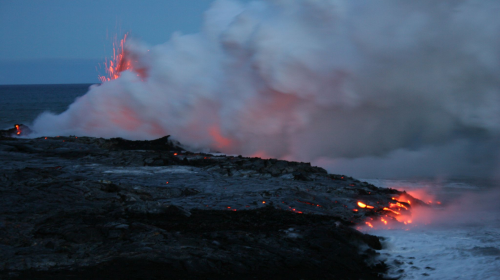Though hidden, Earth’s interior is full of activity. Heat from Earth’s interior drives plate tectonics, the movement of giant slabs of the Earth’s crust. At certain areas, such as along the coast of Chile, one plate slides under another, sinking into the mantle in a process called subduction. New research by Yale geoscientists Kanani Lee, associate professor of geology and geophysics, and graduate student Jie Deng helps explains why subducting plates do not sink directly down, but stagnate at around 1000 km in the lower mantle.
The researchers studied ferropericlase, the second most abundant mineral in Earth’s mantle, under high temperature and pressure conditions simulating Earth’s interior. By looking at how ferropericlase’s melting behavior affects its viscosity, or its resistance to flow, the researchers hypothesized that around 1000 km below Earth’s crust, ferropericlase helps create a region in the mantle a hundred times more viscous than the surrounding rock.
This layer would hinder the sinking of tectonic slabs, causing the slabs to buckle and stagnate. In the other direction, the layer would affect mantle plumes, such as those beneath Hawaii and Iceland, that contribute to volcanic activity. The layer’s high viscosity would slow down and deflect plumes of hot rock rising from Earth’s core, causing the plumes to bend sideways.
“There have been other ways to explain the stagnation of subducting slabs, however this mechanism also explains the deflection of rising plumes,” said Lee. This new theory is the first to account for both stagnation of subducting plates and deflection of mantle plumes.
References
[1] Interview with Professor Kanai Lee, Yale Department of Geology and Geophysics on 12/01/09
[2] “Viscosity jump in the lower mantle inferred from melting curves of ferropericlase”, J. Deng, K.K.M. Lee, Nature Communications 8, 1997 (2017) [https://www.nature.com/articles/s41467-017-02263-z]
[3] https://news.yale.edu/2017/12/08/unusual-melting-behavior-mantle-mineral-may-dictate-deep-flow-

